Australia’s cloud landscape is unlike any other. Instead of concentrating everything in one mega-region, the country has engineered a dual-core approach: Sydney as the commercial powerhouse that drives scale, and Canberra as the sovereign stronghold that protects government workloads.
Sydney hosts the bulk of Australia’s international submarine cable landings; ~14 out of Australia’s 18 international submarine cables land in the Sydney area, making it the country’s major connectivity hub. Canberra is home to Microsoft’s Azure Australia Central regions, two Azure regions set up specifically to serve government and protected workloads via a partnership with Canberra Data Centres.
Together, these twin hubs form a balanced cloud ecosystem that not only fuels enterprise growth at home but also ensures national data security; Canberra’s campuses meet the high government security standards (ASIO T4 and related accreditations) required for sensitive workloads. In doing so, Australia has created a framework that is already catching the attention of other nations searching for ways to reconcile hyperscale expansion with sovereignty demands.
How did Sydney become Australia’s cloud powerhouse?
Sydney earned its place as the engine of Australia’s cloud because everything, global providers, business demand, and international connectivity lines up here. All the big names in cloud, Amazon Web Services, Microsoft Azure, Google Cloud, and Oracle, have built major data centers in the city to serve not just local companies but also the wider Asia-Pacific region.
Major Cloud Facilities in Sydney:
Enterprises are another reason Sydney dominates. Banks, hospitals, and universities all cluster in and around the city, and their heavy reliance on digital services keeps pushing demand for more cloud infrastructure. Local players like Macquarie Data Centres and NEXTDC have followed suit, investing in large campuses such as Macquarie’s Intellicentre 3 East and NEXTDC’s S3.
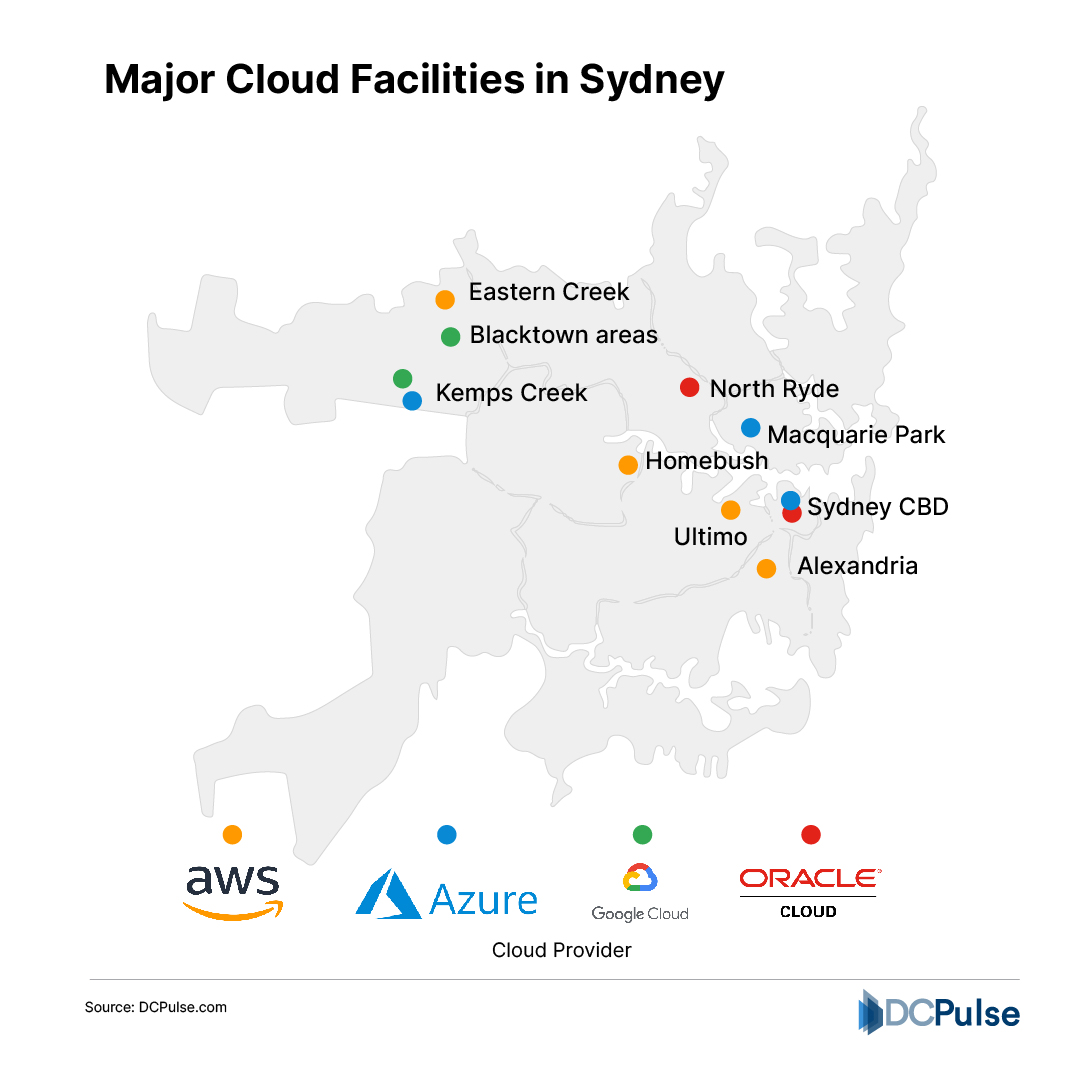
Local Data Center players, their campuses, and their locations in Sydney:
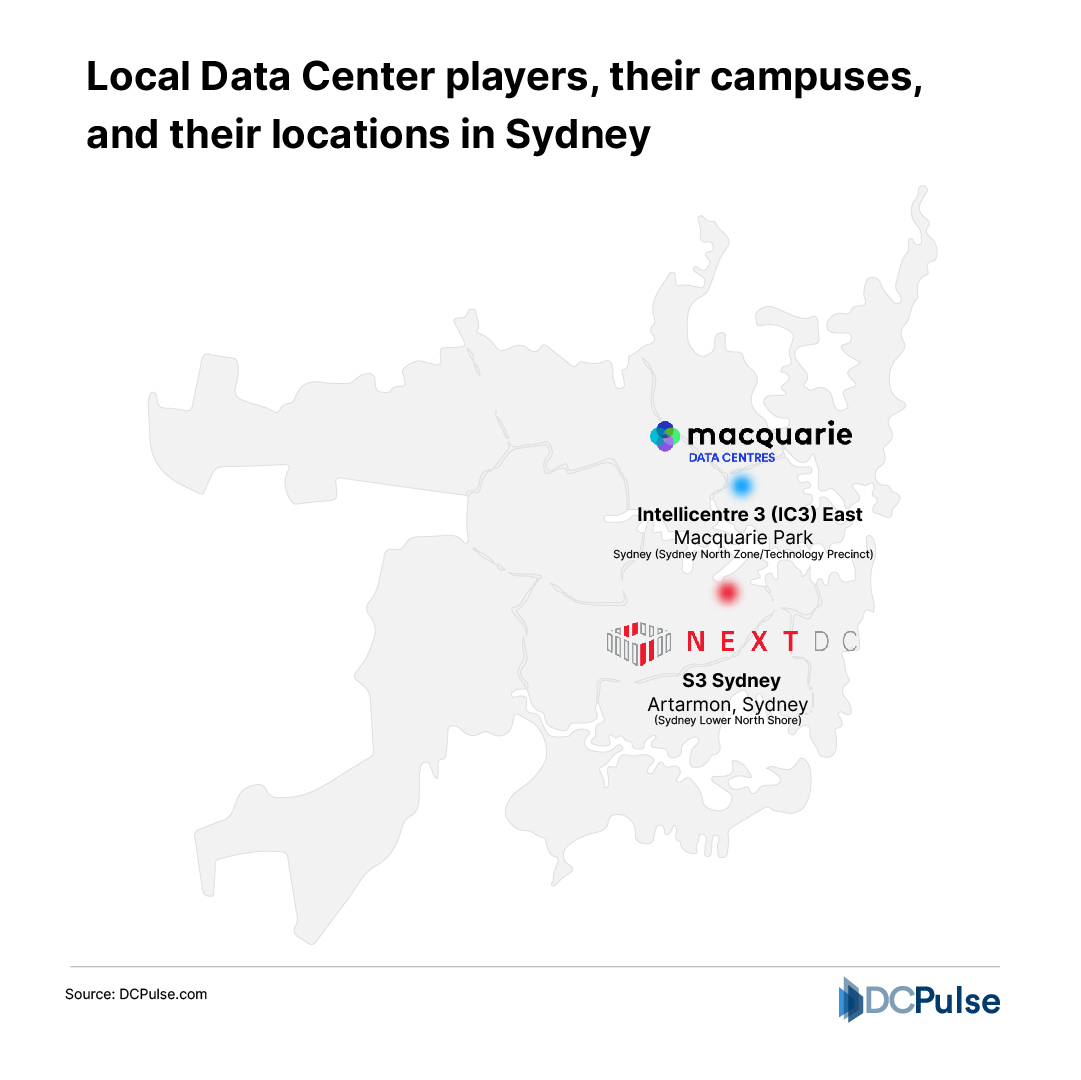
Regions where the cables land:
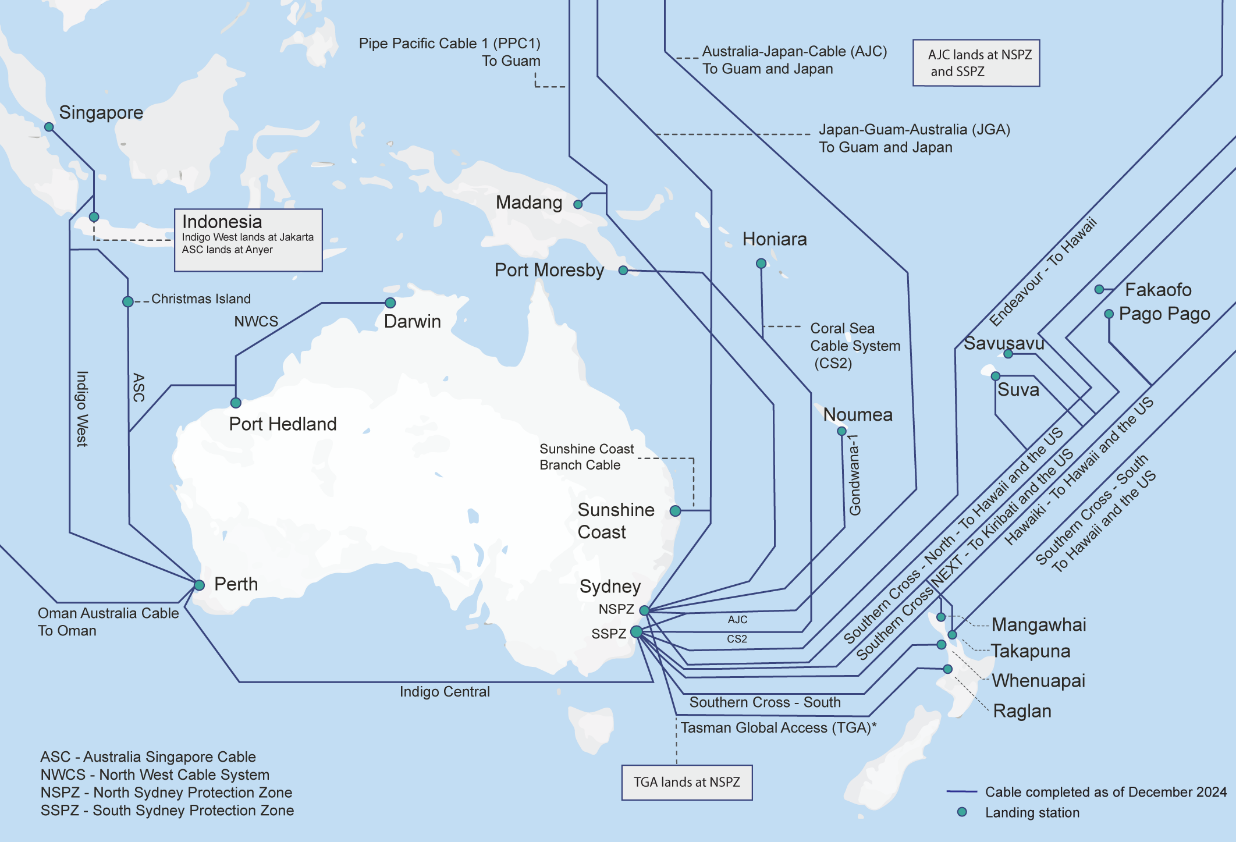
Connectivity seals the deal. Of the 18 subsea cables that connect Australia to the rest of the world, 14 land in Sydney. These cables link the city to the U.S., Japan, Singapore, and beyond, giving Sydney low-latency pathways that global businesses rely on. That mix of hyperscaler presence, enterprise demand, and international links is why Sydney isn’t just a city with data centers — it’s Australia’s commercial cloud powerhouse.
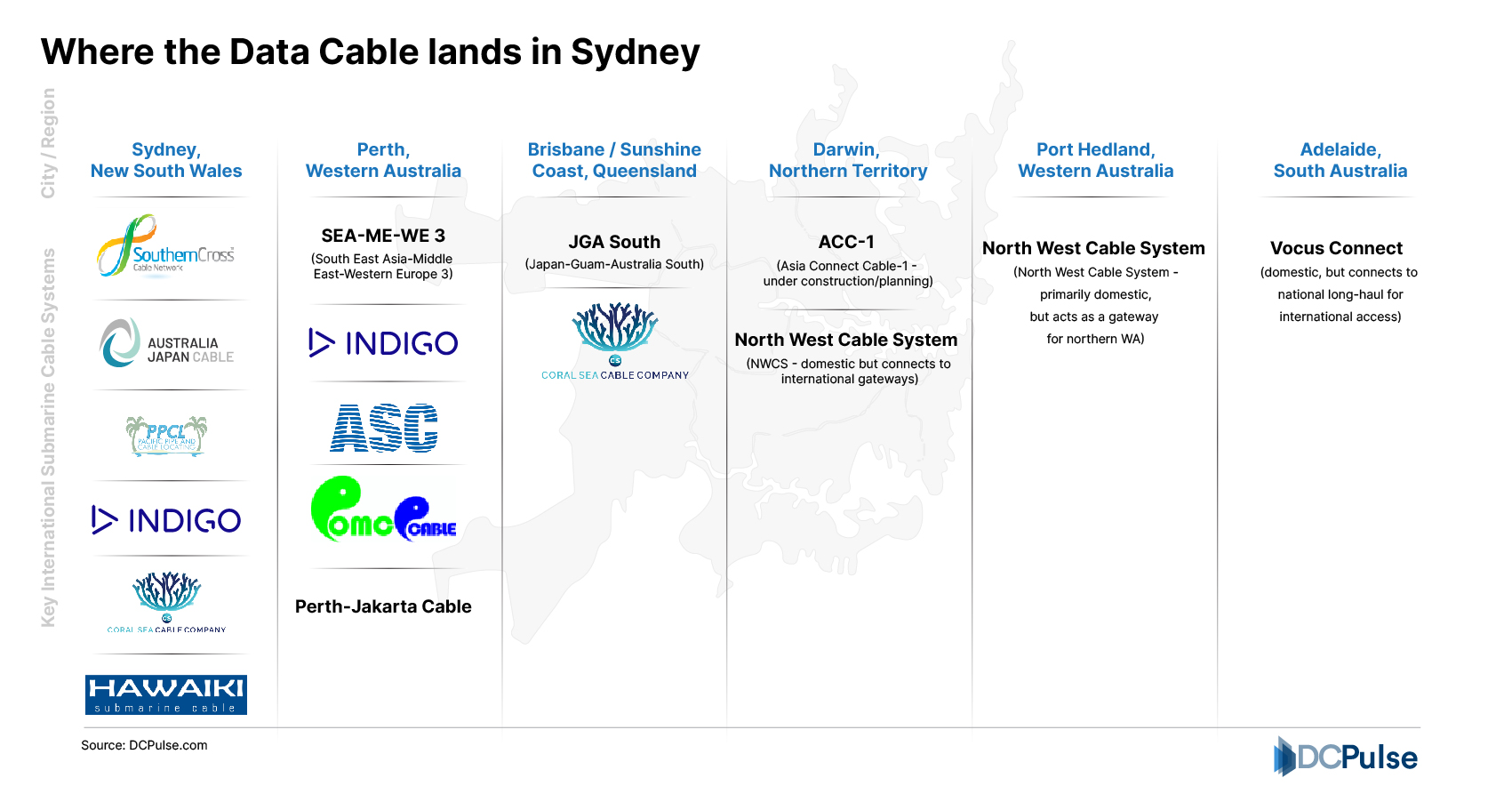
Why does Canberra anchor Australia’s sovereign cloud?
Canberra isn’t about scale; it’s about security and sovereignty. The city hosts cloud infrastructure designed specifically to protect government and sensitive workloads. Microsoft’s Azure Australia Central regions, launched in partnership with Canberra Data Centres, are tailored for federal agencies and defense operations, providing unclassified and protected government services within Australian borders.
Local operators like Canberra Data Centres run multiple high-security campuses, Hume One, Hume Two, Fyshwick, and the upcoming Beard campus, all built to meet strict government standards, including ASIO T4 compliance. These facilities ensure that sensitive data stays in the country while still offering reliable cloud services.
Operators and their Facilities in Canberra:
Connectivity also plays a key role. High-capacity fiber links connect Canberra to Sydney and other major cities, letting government workloads interact smoothly with commercial systems when needed. This combination of specialized infrastructure, regulatory compliance, and secure connectivity is why Canberra serves as the sovereign backbone of Australia’s dual-core cloud.
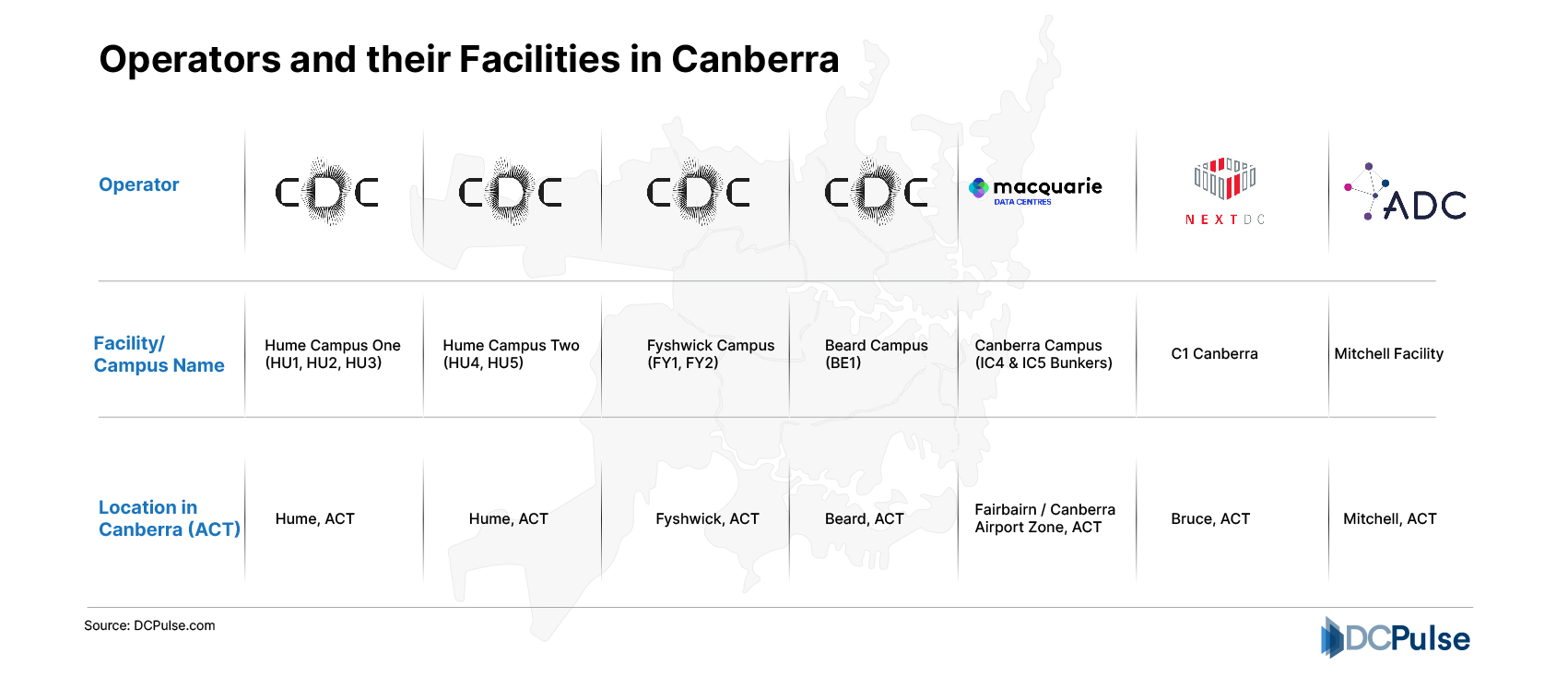
Expanding Beyond the Dual Core
While Sydney and Canberra remain the core of Australia’s cloud, other cities are stepping up to support the country’s growing digital needs. Melbourne, Brisbane, and Perth are emerging as key hubs, providing extra capacity, redundancy, and closer access for local businesses.
Melbourne is seeing major growth, driven by hyperscaler investments and local operators. Amazon Web Services plans to invest AUD 10 billion (USD 6.53 billion) to expand its Australian infrastructure by 2029, with a significant focus on Melbourne.
NEXTDC is also developing a new data center campus in Port Melbourne, backed by an AUD 2 billion (USD 1.31 billion) investment. Renewable energy projects, such as new solar farms in Victoria, are integrated to make this growth more sustainable.
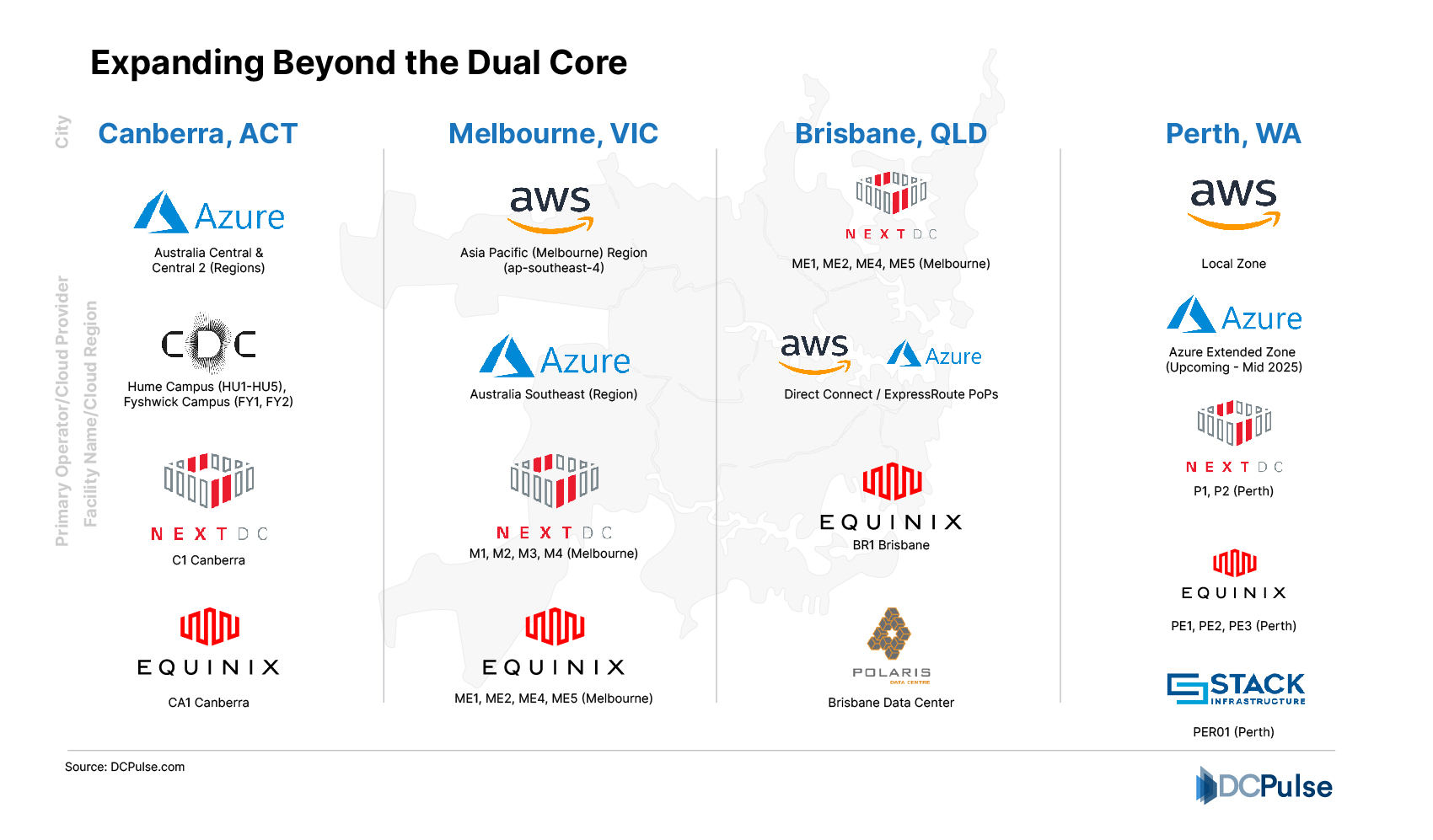
Brisbane is becoming another commercial and AI-ready hub. Microsoft plans to invest AUD 5 billion (USD 3.27 billion) over the next two years to expand cloud computing capacity, scaling its data centers and supporting both enterprise and government workloads
Perth, traditionally a smaller player, is gradually gaining attention due to its strategic location and potential for renewable energy integration. Although investments are smaller, the city’s development ensures that Australia’s cloud network remains resilient and geographically distributed.
Key Players and the Total Investment per City:
These regional expansions reinforce the Sydney-Canberra backbone, giving businesses faster, more reliable access to cloud services and adding layers of redundancy. At the same time, they align with Australia’s broader goals for sustainability and grid modernization.
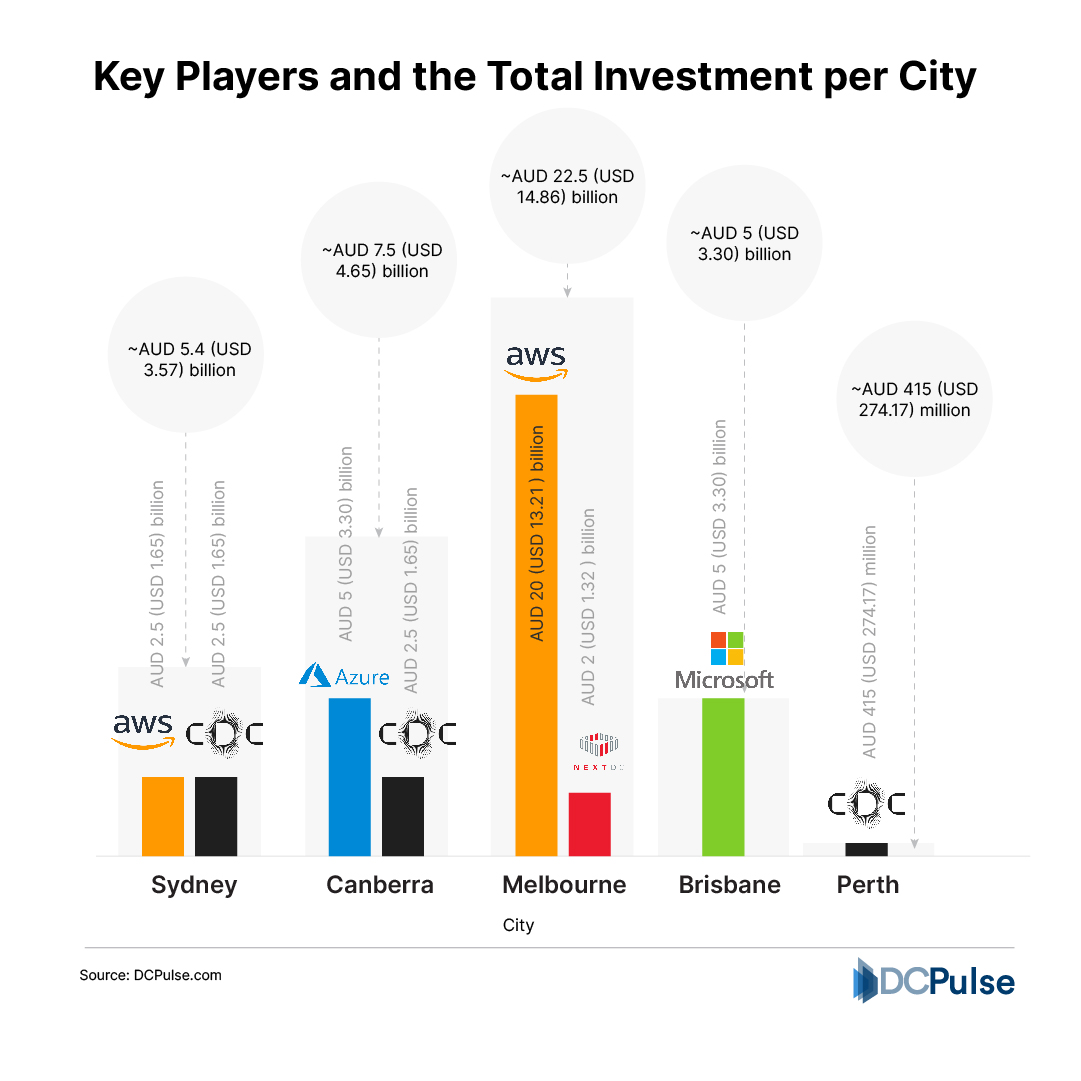
What are the business and global implications of Australia’s dual-core cloud strategy?
Australia’s dual-core approach, Sydney for scale, Canberra for sovereignty, is more than just a national strategy; it has clear benefits for businesses and offers lessons for the world.
For enterprises, the system provides high-performance cloud services with low latency and redundancy. For example, the Commonwealth Bank of Australia (CBA) relies on Sydney hyperscale data centers (AWS and NEXTDC) for large-scale digital banking services and AI workloads, benefiting from fast, resilient infrastructure.
Meanwhile, government and defense agencies, like the Australian Taxation Office (ATO), leverage Canberra’s Azure Australia Central regions to securely handle sensitive data while remaining compliant with strict sovereignty requirements. The Australian Bureau of Meteorology (BoM) also uses this dual-core setup to run complex climate simulations, with secure backups in Canberra and high-performance computing in Sydney.
From a global perspective, Australia’s dual-core model is a blueprint for countries balancing commercial growth with sovereignty requirements. Nations like Germany, Japan, and India can study how Australia integrates hyperscale capacity with secure sovereign regions. The model also demonstrates the value of renewable energy integration, with new data centers co-located with solar and grid modernization projects to reduce environmental impact.
By combining scale, security, and sustainability, supported by real-world deployments, Australia’s dual-core cloud shows that a national cloud strategy can fuel business growth, protect sensitive data, and provide a replicable framework for the global digital economy.
What does the future hold for Australia’s cloud?
Australia’s dual-core cloud is evolving rapidly, with both commercial and sovereign hubs set to expand significantly. Sydney will continue to scale as the commercial powerhouse. Amazon Web Services (AWS) has committed AUD 10-20 billion to expand its infrastructure across Australia by 2029, with a strong focus on Sydney, including new data center campuses and enhanced connectivity. NEXTDC is also investing AUD 2 billion to expand its Sydney campuses, offering high-density, interconnected facilities.
Meanwhile, Canberra remains a secure sovereign hub. Microsoft continues to expand its Azure Australia Central regions with investments in advanced government-focused data centers. Local operators like Canberra Data Centres (CDC) are upgrading facilities such as Hume One and Hume Two to meet increasing demand for sensitive workloads.
Regional hubs are also growing. Melbourne sees AWS investing AUD 20 billion by 2029 and NEXTDC committing AUD 2 billion, Brisbane hosts Microsoft’s AUD 5 billion expansion, and Perth is developing with CDC investments ~AUD 415 million. These expansions not only provide redundancy and local access but also integrate renewable energy sources, making Australia a leader in sustainable cloud infrastructure.
The Commonwealth Bank of Australia relies on Sydney for large-scale banking operations, the Australian Taxation Office uses Canberra for secure government workloads, and the Bureau of Meteorology leverages both hubs for high-performance climate simulations.
This combination of scale, sovereignty, and sustainability, backed by tangible investments and real deployments, positions Australia as a global model for cloud infrastructure, demonstrating how strategic planning can drive growth, security, and environmental responsibility.
Building the Cloud That Others Can Follow
Australia’s dual-core cloud, Sydney for commercial scale, Canberra for sovereign security, supported by growing regional hubs, has created a robust and balanced digital ecosystem. By strategically separating commercial and government workloads, integrating renewable energy, and expanding into Melbourne, Brisbane, and Perth, the country has shown how to scale while maintaining security and sustainability.
Real-world deployments, like the CBA leveraging Sydney for high-performance banking operations and the Australian Taxation Office using Canberra for secure government workloads, demonstrate the effectiveness of this approach.
Investments from hyperscalers and local operators, AWS, Microsoft, NEXTDC, and CDC, reinforce that careful planning and execution can deliver both growth and resilience.
For other nations navigating the challenges of hyperscale cloud expansion alongside data sovereignty, Australia’s model offers a practical blueprint. It proves that it’s possible to support enterprise growth, protect sensitive workloads, and promote sustainable operations simultaneously.
In doing so, Australia has built a cloud that others cannot just admire but also learn from and follow.
.jpg)
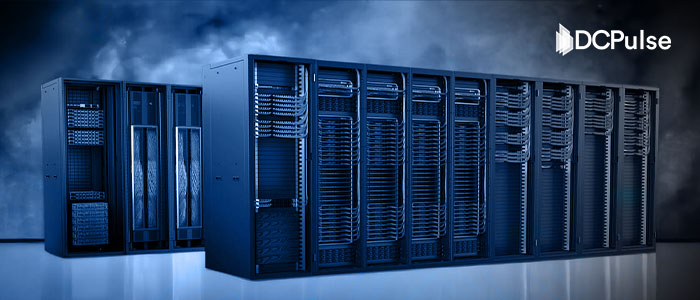
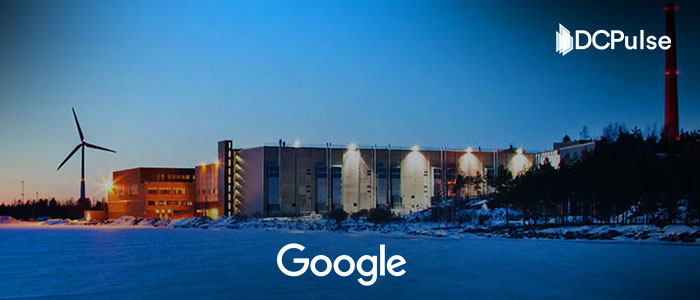

.jpg)
